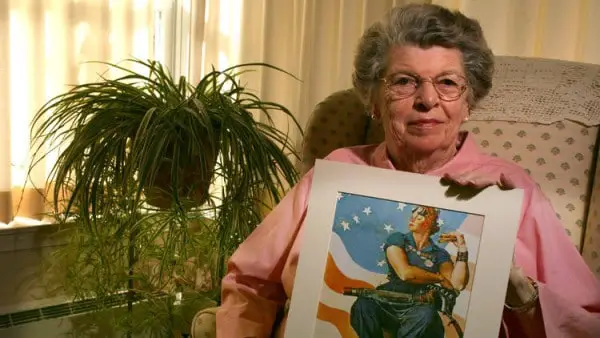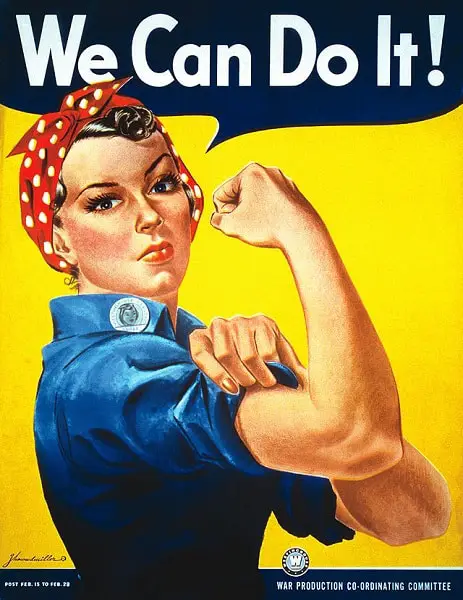
An American Icon died on Tuesday at the age of 92. Mary Doyle Keefe was model for Rosie the Riveter, painted by Norman Rockwell that debuted on the Saturday Evening Post in May 1943. This painting is not to be confused with the 1942 “ We Can Do It!” poster by J. Howard Miller.

Mary was only 19 when Rockwell hired her to pose for iconic picture which symbolized the American working woman during WWII. She was a telephone operator who had never held a riveter or worked in a factory.
In a 2012 Interview with Courant, Keefe said, “I was a telephone operator, 19 years old, and we were neighbors. And [Rockwell] often used neighbors for his paintings. He liked to paint from photos, so his photographer took pictures of me, just posing me different ways and telling me to look this way or that.”
“You sit there and he takes all these pictures,” Keefe told The Associated Press in 2002. “They called me again to come back because he wanted me in a blue shirt and asked if I could wear penny loafers.” She was paid $5 a day to pose for Rockwell’s photographer, Gene Pelham.
The iconic painting portrays a red-haired Rosie in blue jean overalls sitting down, with a sandwich in her left hand, her right arm holding a lunch box with the name “Rosie” on it, a rivet gun across her lap and her feet resting on a copy of Adolf Hitler’s Mein Kampf, with an American Flag waving behind her.
Keefe told the Courant that the painting didn’t bear much resemblance to her, “Other than the red hair and my face, Norman Rockwell embellished Rosie’s body, I was much smaller than that and did not know how he was going to make me look like that until I saw the finished painting.”
Twenty-four years later Rockwell sent her a letter apologizing for the larger body, claiming that she was the most beautiful woman he’d seen, but he had to make her into a sort of giant to represent the image he wanted. Rockwell wanted Rosie to show strength and apparently modeled her body off Michelangelo’s Isaiah from the ceiling of the Sistine Chapel.
The original painting is now part of the permanent collection at the Crystal Bridges Museum of American Art in Bentonville, Ark.






